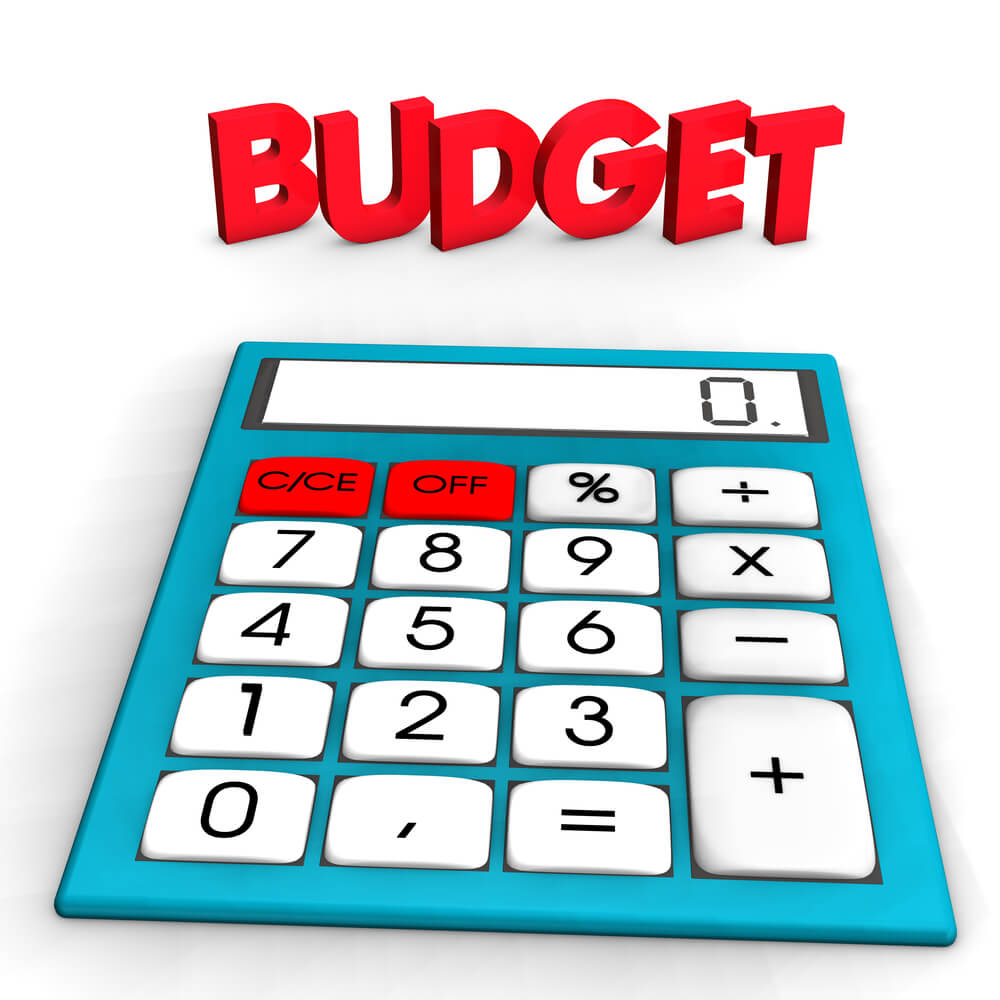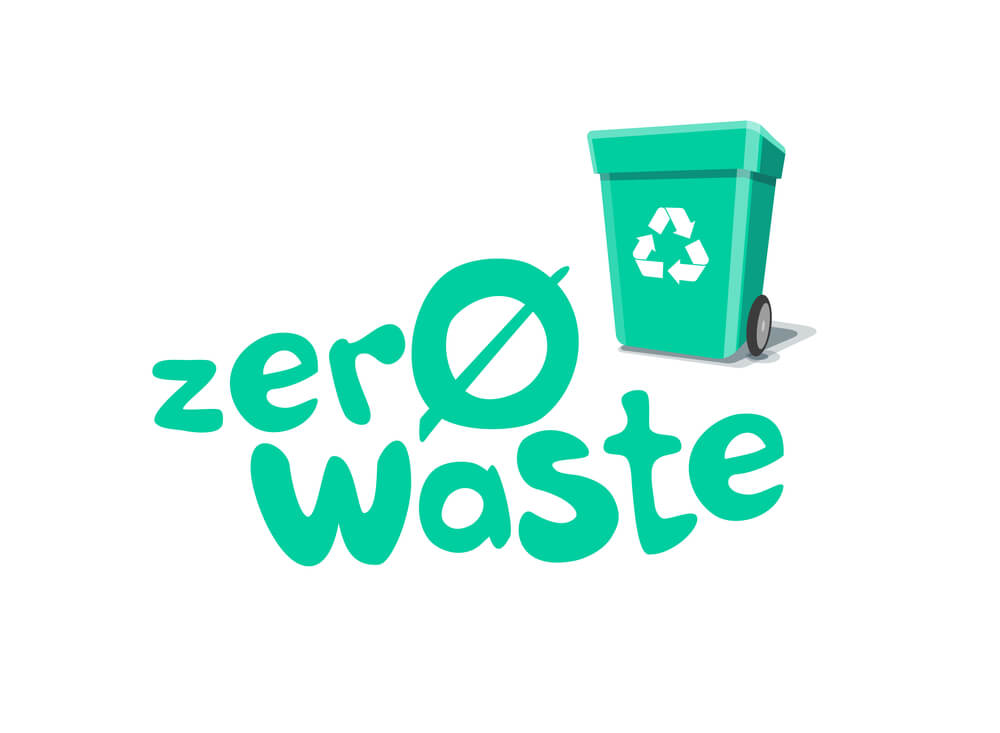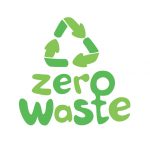Many people shy away from Zero-Waste Living because they think it will cost them more than they currently spend on household products and services.
This is a misconception of what Zero-Waste Living is all about, an erroneous belief based on the hype around buying ‘green products’ that are generally sold at a higher price than conventional products.
Let’s dispel a few Zero-Waste myths to prove the financial efficacy of living a Zero-Waste life.
Adopting a Zero-Waste lifestyle is implicitly a conservative move towards resource sustainability.
By saving natural resources, Zero-Waste Living simultaneously saves money. Implemented wisely, Zero-Waste Living is not expensive.
First of all, Zero-Waste Living starts in your head – with a change of mindset.
That doesn’t cost a penny! Secondly, Zero-Waste Living is all about being eco-savvy, about saving our environment.
This means using less stuff. It’s not about replacing one kind of neatly packaged and expensively marketed consumer product with another.
To prove that Zero-Waste Living is in fact, a budget-friendly endeavor, we need to execute a budget analysis.
What is a Zero-Waste Budget?
Imagine you’re going on a long journey to a land you’ve never visited.
You’re going to do several things before you start packing your bags, right? Planning for Zero-Waste Living is no different.
A Zero-Waste Budget is a breakdown of household expenditures that can be channeled into sustainable alternatives to regular products and services.
A Zero-Waste Budget is a purchasing plan for eco-friendly products and a cost-analysis tool to record cost-savings generated via Zero-Waste Living.
Before you can accurately compile a Zero-Waste Budget, you’ll need to do all of the following:
- Research the Zero-Waste landscape in your area. Zero-Waste Living is about living a more connected life – closer to nature and to your community. Use Google to pinpoint Zero-Waste proponents in your area, from shops to farmers’ markets to individual activists.
The more collaboration, knowledge sharing, and support you can build, the stronger your Zero-Waste Living efforts will be. It’s all about teamwork, communication, and intelligent use of resources.
- Understand the culture of Zero-Waste Living. The more you learn about what is driving the Zero-Waste movement, the better you will network with fellow Zero-Wasters. A well-defined sense of purpose will generate the necessary enthusiasm and perseverance so vital to creating a successful Zero-Waste lifestyle.
- Decide where you want to go with your Zero-Waste lifestyle. Having a general idea of what Zero-Waste Living is all about will enable you to envision your Zero-Waste lifestyle with a degree of realism.
Without succumbing to analysis paralysis, conduct a quick audit of your consumer lifestyle habits as they exist currently and then jot down on paper where you feel you can begin to reduce your levels of waste.
Sketch a rough diagram in your mind’s eye of where you’d like to be on your Zero-Waste journey in 12 months’ time, both financially and physically.
- Study Zero-Waste Living methodologies. Go online to study how successful Zero-Wasters are living the green life. YouTube and blog sites (Google ‘zero-waste blogs’) are the best places to start.
You will discover hundreds of ways to move towards a Zero-Waste lifestyle.
Be realistic in what you can achieve as far as limiting your household waste is concerned.
Don’t set yourself up for disappointment by overstretching your resources, be that time, energy, space, skills or money.
- Determine where you can implement Zero-Waste methodologies. It’s important to remember that Zero-Waste Living is both a journey and a destination – you’re not going to get to Zero overnight.
Zero-Waste Living is a process of elimination, trial and error, and faith in your conviction that living a low-impact life is the best way to live.
With clarity of purpose guiding you, you can now target areas that exhibit wasteful tendencies, and aspects of your life that you sense could be more eco-friendly.
Start with the most apparent waste areas, like shopping for luxury items, convenience products, and impulse buys.
Move on to more obstinate areas like transport and cosmetics.
Strategize how you can reduce wasteful habits in all these areas and then focus on other areas, like utilities, and how potentially wasteful your current gardening processes are.
Let’s take a closer look at the most likely areas ready for your Zero-Waste scalpel.

Critical Areas to Budget for Zero-Waste Living
Get a copy of your last six months’ bank statements in front of you (do it digitally, rather than on paper, to be Zero-Waste).
Select a highlighter and mark all the big expenses.
Start with a target of eight – eight expense areas that are definitely heavy producers of waste, be that solid waste, energy waste, or just a waste of money (like single-use products and fancy packaging).
Your highlighted items will probably look something like this:
- Food: Supermarket/$1000pm | Takeout/$80pm | Corner store/$300pm
- Drink: Liquor store/$200pm | Takeout/$50pm | Corner store/$100pm
- Toiletries: Cosmetics/$90pm | Sanitation/$50pm
- Cleaning products: Supermarket/$70pm
- Utilities: Electricity/$450pm | Gas/$70pm | Water/$80pm | Trash/$30pm
- Car: Fuel/$300pm | Servicing/$50pm
- Entertainment: At home/$$40pm | Going out/$500pm
- Garden: Labor/$200pm | Compost & fertilizer/$30pm
Your figures will obviously look different, but the areas of focus will be similar.
Tally those costs for future reference. Those are the areas you need to focus your Zero-Waste Budget on first.
What’s the Best Way to Begin Zero-Waste Spending?
Don’t be alarmed by that word, ‘spending’. Zero-Waste Living means both spending and saving money.
It’s a new kind of household budget we’re building – a long-term, sustainable Zero-Waste budget that for now has to resort to old terminology and semantics.
Nonetheless, now that you’ve targeted your wasteful areas, it’s time to plug the leaks in the old tub, so to speak.
The best way to begin spending money on a Zero-Waste Budget is to stop buying high-convenience, low-mass, packaged food items and start buying bulk-purchased equivalents.
Moving to unpackaged whole foods, transported in reusable bags and bottles, will lower your monthly food costs.
Move to the next item on your highlighted list – ‘Drink.’ Whether it’s water, milk, juice, or alcohol, there’s always a Zero-Waste way to cut costs (while doing the good green work, of course).
Here are a few Zero-Waste methods of getting your beverages, mindfully, at a lower price:
- Get juices and dairy products from wholefood and farmers’ markets. Bring empty bottles you’ve stored and fill them up with the good stuff.
- Buy a water purifier.
- Freeze juices and dairy products.
- Make your own cider and pineapple beer (YouTube has the dope on making any type of popular alcoholic drink).
- Only buy canned drinks if you’re planning to recycle the cans at a scrap metal dealer. You’ll need to collect a lot of them, but it’s money in the bank if you can.
- If you do buy plastic beverage bottles, store them for repurposing as garden and workshop containers.
Toiletries and cosmetics are a definite hotspot for waste. Cut back on ‘vanity’ products, cosmetics, and trendy hair products.
Make your own shampoo using lemon juice and organic bar soap.
- Toothpaste tubes are not eco-friendly. Replace your regular fluoride paste with baking soda in a reusable spice bottle.
- Disposable razors and aerosol shaving creams can be replaced with traditional razor blades and a creamy bar of biodegradable soap.
- Replace expensive tissues and wipes with biodegradable toilet paper.
Cleaning products invariably come in plastic packaging – avoid buying a product with plastic packaging if you possibly can.
There are soap shops that specialize in ‘bring your own bottle’ refilling. Why pay for a product that you’re going to throw away?
You can make cleaning products easily. A favorite old-school recipe for a versatile cleaner is baking soda dissolved in vinegar.
Ash from the BBQ is also an age-old cleaning product.
Utilities continue to escalate in price, as does the per-capita draw on the national power, water, and sewage grids.
You can lower your electricity, gas, water, and trash removal expenses by mindfully modifying the way you manage your household amenities.
- Cook in bulk and cook less often.
- Use lids on your cooking pots to optimize energy consumption.
- Freeze food in repurposed plastic food containers.
- Insulate your roof, windows, and doorways with recyclable materials.
- Shower instead of bath – wet, soap, rinse (cowboy-style).
- Recycle your greywater to irrigate your garden.
- Compost your organic waste to fertilize your garden.
Your car is a big generator of waste. Reduce your fuel bill by driving less.
When you drive, do so with ‘auto empathy’ to reduce wear and tear on the car.
- Walk to the shops or carpool with your neighbors to lower transport costs and reduce environmental impact.
- By shopping less frequently, you’ll lower your transport costs and your carbon footprint.
Entertainment invariably comes at a premium, but that’s easy to remedy.
- Cancel streaming movie subscriptions and watch free documentaries online.
- Make popcorn, lemonade, and milkshakes at home.
- Bake cakes and biscuits. Make fudge and chocolate éclairs.
- Walk to the park and play Frisbee. Go fishing on your bicycle at a nearby stream or lake.
- Read! Online books can be sourced for free or at a low cost.
- Learn to play a musical instrument.
- Paint a watercolor or start scrapbooking.
- Host your own dinners.
- Play board games with your friends and family.
Your garden costs money to maintain, and chances are, all you do with it, is look at it! Fix that with Zero-Waste action.
- Compost all your garden refuse.
- Start a vegetable patch.
- Plant fruit trees.
- Make your own garden furniture and scenic features using repurposed materials.
There you have a list of waste areas your Zero-Waste Budget can start working on.
They’re all regular activities, each consuming a portion of your monthly household budget.
Be creative in your Zero-Waste remedial action, and don’t be shy to borrow ideas from the YouTube pundits.
Now, let’s look at the long-term, slightly more expensive components of your Zero-Waste Budget.

What are the Cheapest Zero-Waste Tools?
A Zero-Waste Tool is an implement or installation that assists in lowering household waste generation.
Let’s start with the least expensive options to get your Zero-Waste Budget turning the numbers.
- A Pressure cooker to speed up cooking times and lower electricity/gas consumption.
- A Pantry with ample shelving to store bottles and bags of food.
- A Coiled black PVC pipe to serve as a roof-mounted solar hot water geyser.
- A set of wheelie bins to separate different packaging materials for recycling, reusing and repurposing. You will need at least five – glass, paper/cardboard, metal/tins, plastic, organic matter/food scraps.
- A Repurposing shed to store and work on repurposing projects.
- Gardening tools to start a vegetable garden.
- Seeds and bulbs for your vegetable garden.
- A basic composting toilet.
- A composting bin.
What are the Most Expensive Zero-Waste Tools?
As you expand your Zero-Waste infrastructure, you will begin to include various systems and tools with a relatively high capital cost.
Like most long-term investments, these Zero-Waste Tools will pay for themselves over time.
These will include:
- A Solar and/or wind-power generating system.
- A Large Water-Storage tank, a pump house, and piping/irrigation system.
- A Biogas Digester to turn all your organic waste into household gas for cooking and heating.
- A Pressure Canner to preserve home-cooked food.
- A shelving unit of mason jars for canning and dry food storage.
- A couple of energy-efficient chest freezers.
There you have a comprehensive Zero-Waste Budget item breakdown.
All the items listed will feature in your Zero-Waste infrastructure at some point in time as you move toward your Zero-Waste goal.
The excellent news for bean counters is that a Zero-Waste Budget can have an Income Column – a profit-generating component.
Let’s take a look.
Can I Make Money From Zero-Waste?
Once you’ve got your Zero-Waste infrastructure running smoothly, you can begin to offer various products and services to your community.
Zero-Waste Revenue Streams include:
- Marketing Zero-Waste consulting services.
- Selling Vegetables, herbs, and fruit from your market garden.
- Selling Canned (in reusable mason jars) foods and preserves.
- Selling Compost and fertilizer.
- Selling Excess solar/wind-generated power to the municipal grid.
For a great case study on how to turn your city dwelling into a profitable Zero-Waste powerhouse, watch this video:
Bringing Your Zero-Waste Budget Together
Now that you know what to look for, what to avoid, and what you’ll need to buy to start your Zero-Waste lifestyle, you can go online to get cost estimates for all the items mentioned above.
Armed with well-researched empirical data, you can compile a rigorous cost-benefit analysis on your personal Zero-Waste program.
With this level of due diligence, your risk will be minimal, and your chances of success that much better!
Conclusion
Creating a Zero-Waste lifestyle is a full-time endeavor.
Once you start on your Zero-Waste journey, eco-wise living will become top-of-mind, and your waking hours will be spent pursuing new and better ways to reach your ultimate target.
It takes courage and commitment, not to mention tons of energy and creativity.
To fuel your motivation tank, be guided by the maxim, ‘ecology is economy and economy is ecology.’
You’re transforming your home into an ecologically sustainable and self-sufficient ‘closed system’ that needs no outsourced help that doesn’t fit your Zero-Waste program.
Ultimately, you’re creating a sustainable lifestyle for you and your family, a future of healthy, happy Zero-Waste living, free of pollution and financial stress.v


